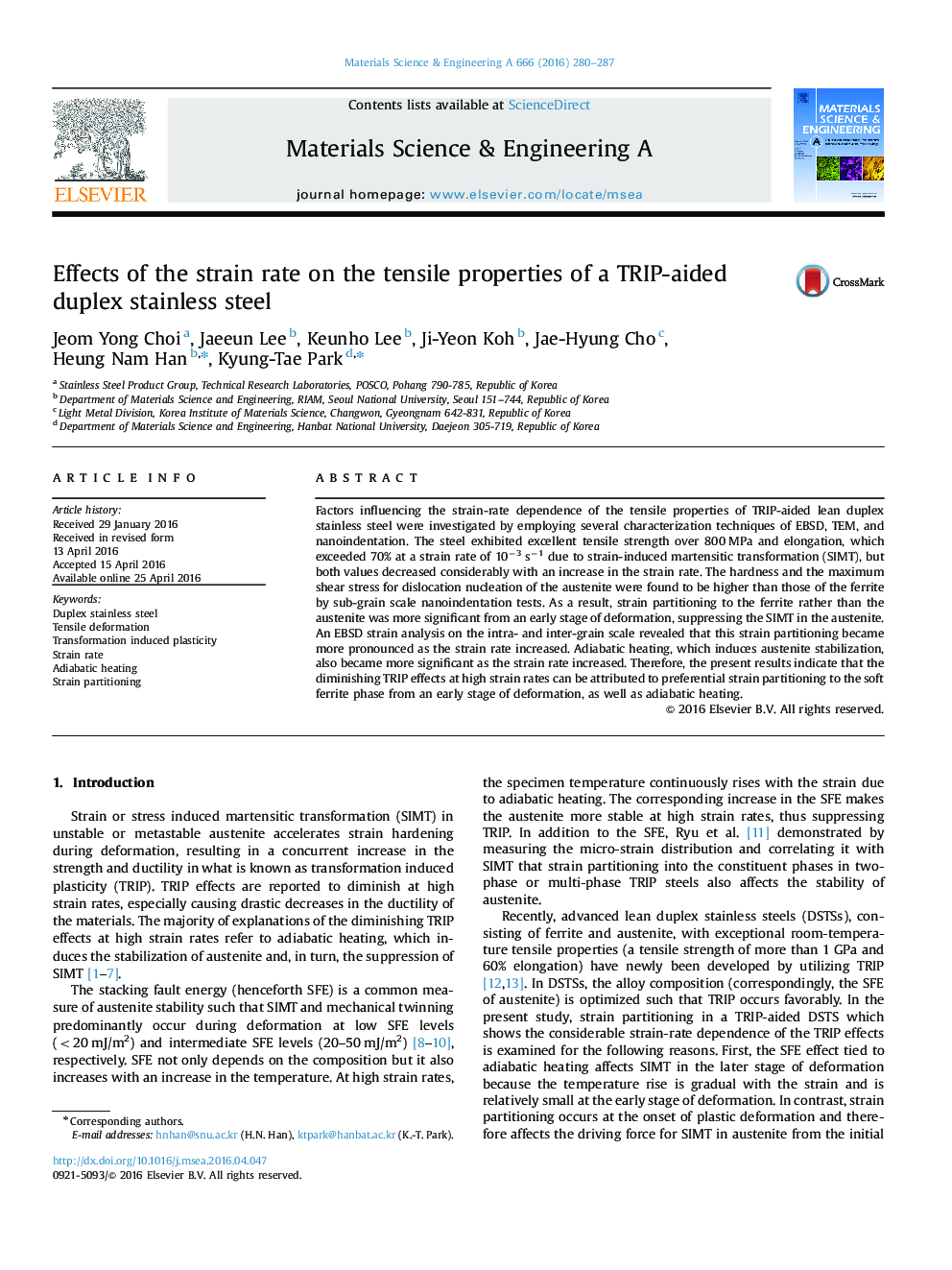| Article ID | Journal | Published Year | Pages | File Type |
|---|---|---|---|---|
| 7975438 | Materials Science and Engineering: A | 2016 | 8 Pages |
Abstract
Factors influencing the strain-rate dependence of the tensile properties of TRIP-aided lean duplex stainless steel were investigated by employing several characterization techniques of EBSD, TEM, and nanoindentation. The steel exhibited excellent tensile strength over 800Â MPa and elongation, which exceeded 70% at a strain rate of 10â3Â sâ1 due to strain-induced martensitic transformation (SIMT), but both values decreased considerably with an increase in the strain rate. The hardness and the maximum shear stress for dislocation nucleation of the austenite were found to be higher than those of the ferrite by sub-grain scale nanoindentation tests. As a result, strain partitioning to the ferrite rather than the austenite was more significant from an early stage of deformation, suppressing the SIMT in the austenite. An EBSD strain analysis on the intra- and inter-grain scale revealed that this strain partitioning became more pronounced as the strain rate increased. Adiabatic heating, which induces austenite stabilization, also became more significant as the strain rate increased. Therefore, the present results indicate that the diminishing TRIP effects at high strain rates can be attributed to preferential strain partitioning to the soft ferrite phase from an early stage of deformation, as well as adiabatic heating.
Keywords
Related Topics
Physical Sciences and Engineering
Materials Science
Materials Science (General)
Authors
Jeom Yong Choi, Jaeeun Lee, Keunho Lee, Ji-Yeon Koh, Jae-Hyung Cho, Heung Nam Han, Kyung-Tae Park,
